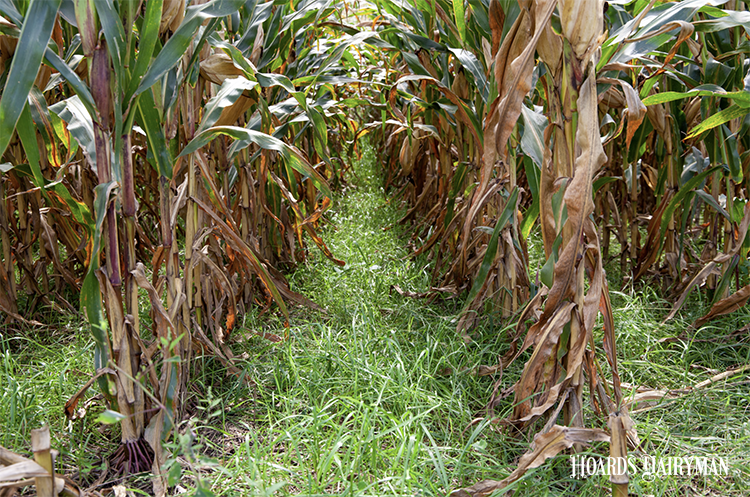
Corn grown for grain is harvested too late in the fall to establish a cover crop in more northern climates. This uncovered soil presents environmental concerns and is a missed opportunity in terms of feed production.
That is why Kathy Soder, an animal scientist with USDA, has been part of a long-term study evaluating the effectiveness of interseeding cover crops into standing corn that can be grazed, harvested, or left in the field over winter.
Another goal of the project was to maintain similar corn yields to fields that did not have the cover crop. “We don’t want to hurt our corn yields while doing this,” Soder said during a Penn State “Bovine Banter” podcast.
For seven years, this research involved interseeding cereal rye into a growing corn crop at about the V4 or V5 stage, when corn is about knee high, Soder noted. The rye was allowed to grow four to five weeks after corn harvest, which Soder said it will, even that late in the season. The rye was then either grazed by cattle or left as cover in the fall and then grazed again in the early spring prior to corn planting.
Soder identified several benefits of this practice. “First, the obvious one is having a cover crop already established in a crop at a time of year when it is too late to plant. When corn is taken off, the cover crop is already established,” she said.
“Cereal rye can act as a nitrogen scavenger by taking up nitrogen left by the corn crop, helping reduce nitrogen losses over the fields,” she continued. Furthermore, the cover crop helps hold down soil during the winter months, reducing soil erosion and nutrition runoff.
Finally, Soder said interseeded cover crops can extend the grazing season, which will significantly reduce stored forage costs. In their experience, the cereal rye provided enough forage to graze 30 head of beef cows on 20 acres for 50 to 70 days in the fall. “That is two more months of grazing,” Soder emphasized.
The spring grazing period is shorter but growth is much greater. They were able to support twice as many cows on 20 acres for 30 to 45 days prior to planting. Alternatively, if grazing is not an option, the forage can also be harvested.
While the experiment utilized beef cattle, Soder said, “Cereal rye is a high-quality forage suitable for any class of dairy cows.” This grazing option could be especially beneficial for farms in specialty milk markets that require a certain number of grazing days. If the fields are too far from the milking center, the feed could also be grazed by dry cows, heifers, or dairy beef animals.
As for the corn yields, Soder said they did not fall with the addition of the cover crops. The fields in their study averaged 120 to 150 bushels per acre.
Soder noted that this research will continue to look at more of the long-term benefits of interseeding cover crops into corn, but she is excited about how it fits into the future of farming.
“With increased worldwide demand for food, escalating farm input costs, and a shrinking farmland basis, the need to get the most from our farmland without damaging the environment is critical,” she concluded. “Novel forage management strategies that integrate cropping and livestock systems are needed to improve economic and environmental sustainability. Interseeding annual forages may be one of these tools.”








